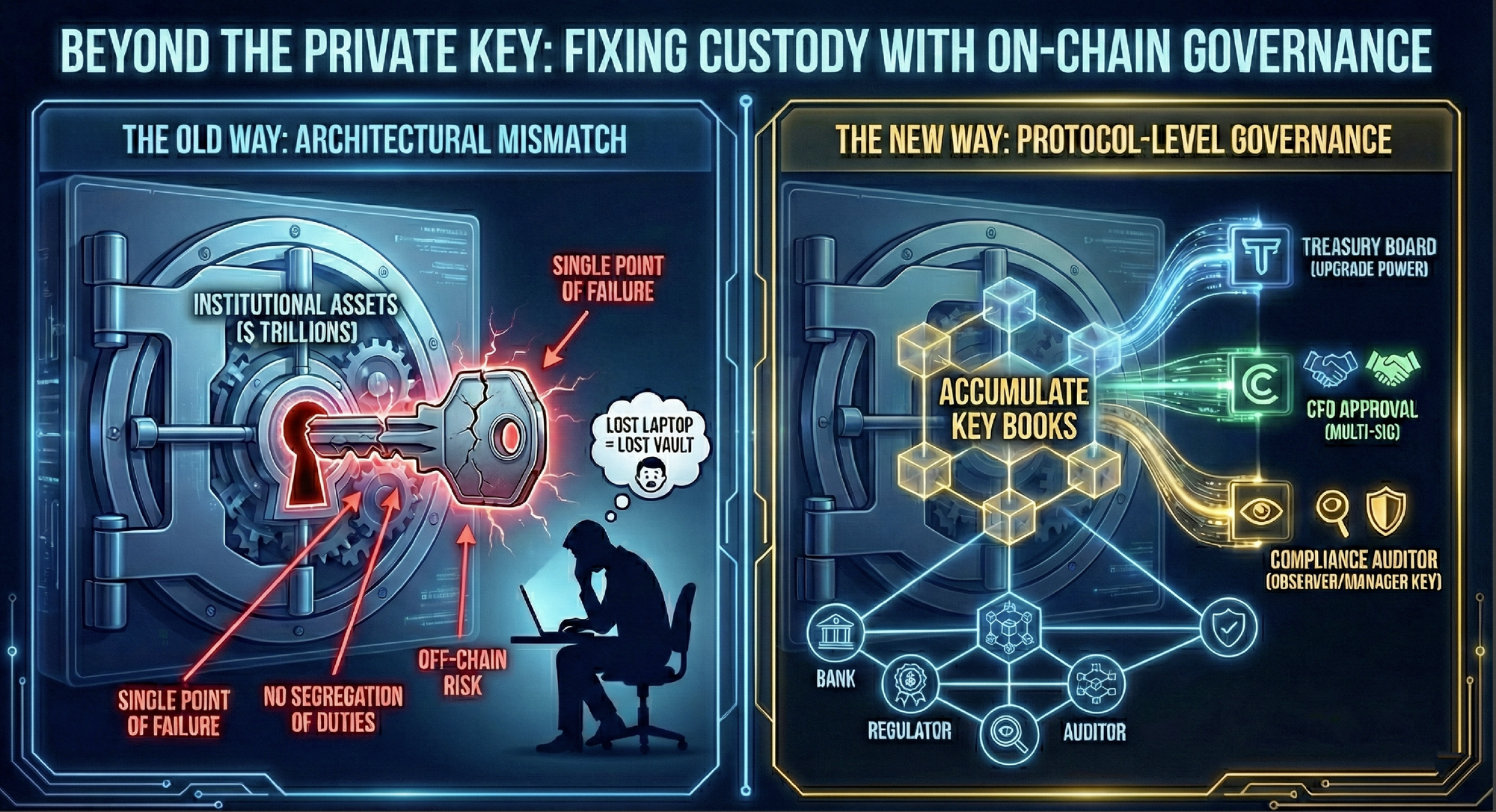
Why are institutional investors pouring capital into cryptocurrencies? Once dismissed as a speculative experiment, digital assets now anchor strategic portfolios for hedge funds, pension funds, and corporate treasuries.
This transformation is fueled by robust infrastructure, regulatory clarity, compelling financial incentives, and cutting-edge technology.
Whether you’re a fund manager, financial advisor, or DeFi innovator, understanding these drivers is critical to thriving in this dynamic landscape.
Ready to explore the forces reshaping finance?

Visit the Institutional Crypto Investing Guide
1. How Does Robust Infrastructure Drive Crypto Adoption?

Can you imagine deploying billions without a secure foundation? A decade ago, crypto markets were a chaotic frontier of unregulated exchanges and vulnerable wallets. Today, institutional-grade infrastructure has transformed the ecosystem, enabling large-scale investment with confidence.
- Custodial Security:
Platforms like Coinbase Custody offer $320 million in insurance coverage, securing billions in institutional assets (Coinbase). - Regulated Trading Venues:
CME Group and Bakkt provide futures and options, enabling hedging strategies for volatility management. - Liquidity Enhancements:
DeFi protocols and layer-2 solutions like Polygon and Arbitrum deliver scalable, low-cost transactions. - Market Intelligence:
Glassnode and CoinMetrics provide on-chain analytics, empowering data-driven decisions (Glassnode). - Prime Brokerage:
Genesis and BitGo offer integrated trading, lending, and custody tailored for institutions (BitGo). - Audit Standards:
Blockchain transparency aligns with SOC 2-compliant reporting, meeting institutional needs.
This infrastructure rivals traditional finance.
Isn’t it remarkable how crypto has matured?
Case Study: Fidelity Digital Assets custodies billions in crypto assets, offering insured storage and SOC 2 compliance for institutional clients (Fidelity Digital Assets).
2. Why Is Regulatory Clarity Critical for Adoption?

Why would a risk-averse institution venture into crypto without clear rules? Regulatory advancements provide the assurance needed, aligning digital assets with stringent compliance standards.
- Global Frameworks:
The EU’s MiCA regulation and U.S. SEC/CFTC guidelines clarify token classifications and trading rules (SEC.gov). - Compliance Tools:
Chainalysis and Elliptic deliver AML/KYC solutions, ensuring regulatory adherence (Chainalysis). - Stablecoin Oversight:
Policies for USDC and Tether enhance trust in cross-border transactions (Circle). - Tax Clarity:
IRS guidelines streamline crypto tax reporting, with tools like CoinTracker simplifying compliance (CoinTracker). - Licensing Standards:
Platforms like Gemini hold NYDFS licenses, meeting institutional requirements (Gemini). - Risk Disclosure:
Clear regulations reduce legal ambiguity, a key adoption driver.
Don’t clear rules unlock new opportunities for compliance-conscious investors?
Expert Insight: “Regulatory clarity is the bridge to institutional capital.” — Hester Peirce, SEC Commissioner (SEC Speech, 2023).
3. How Does Crypto Enhance Portfolio Performance?

Can crypto truly enhance portfolio performance? The data is compelling. Digital assets offer unique risk-return profiles, making them a strategic addition for diversification and alpha generation.
- Low Correlation:
BlackRock’s ongoing research shows Bitcoin’s low correlation with equities and bonds, enhancing resilience (BlackRock). - Alpha Generation:
Hedge funds like Pantera Capital achieve strong returns through crypto strategies (Pantera Capital). - Altcoin Opportunities:
Ethereum and Solana expose investors to smart contracts and DeFi ecosystems. - Risk Management:
CME derivatives allow hedging against price swings (CME Group). - Portfolio Optimization:
A 2-5% crypto allocation improves Sharpe ratios, balancing risk and reward. - Liquidity Access:
High-volume exchanges ensure efficient position management.
Bitcoin’s long-term annualized return of ~60% outpaces the S&P 500’s ~10% (CoinMetrics).
Isn’t that a powerful case for inclusion?
Case Study: ARK Invest’s 3% Bitcoin allocation in its ETF portfolio has boosted risk-adjusted returns, leveraging Bitcoin’s uncorrelated nature (ARK Invest).
4. Why Are Macro-Economic Trends Driving Crypto Adoption?

What happens when fiat systems falter? Institutions turn to alternatives, and crypto is a powerful hedge. Macro-economic trends are accelerating adoption at scale.
- Inflation Protection:
Bitcoin’s 21-million-coin cap positions it as “digital gold,” with firms like MicroStrategy holding significant allocations (MicroStrategy). - Geopolitical Stability:
Stablecoins like USDC enable low-cost cross-border payments in volatile regions. - Monetary Policy:
Accommodative monetary policies drive interest in decentralized assets. - Currency Devaluation:
Emerging markets use crypto for financial sovereignty. - Global Trade:
Blockchain streamlines settlements, reducing banking reliance. - Economic Uncertainty:
Geopolitical tensions amplify crypto’s safe-haven appeal.
5. How Does Blockchain Technology Fuel Adoption?

Why is blockchain more than hype? Its transparency and efficiency are revolutionizing finance, making crypto a practical choice.
Imagine a digital ledger as secure as a bank vault but as accessible as email.
- Smart Contracts:
Ethereum automates complex instruments, minimizing counterparty risk (Ethereum.org). - Asset Tokenization:
Platforms like Securitize tokenize real estate, unlocking liquidity (Securitize). - Scalability:
Layer-2 networks like Optimism enhance transaction speed and affordability (L2Fees). - Interoperability:
Polkadot enables seamless blockchain interactions (Polkadot). - Decentralized Oracles:
Chainlink provides reliable data for DeFi applications (Chainlink). - Privacy Solutions:
Zero-knowledge proofs ensure secure, private transactions.
Expert Insight: “Tokenization will transform illiquid markets into liquid opportunities.” — Larry Fink, CEO, BlackRock (BlackRock, 2023).
6. What Role Do Competitive Pressures Play in Adoption?

What happens when competitors gain a first-mover advantage? Institutions feel the pressure to act. As industry leaders embrace crypto, others follow to stay relevant.
- Market Leaders:
JPMorgan’s Onyx platform processes billions in tokenized transactions (JPMorgan). - Client Demand:
High-net-worth clients demand crypto exposure, forcing wealth managers to adapt. - First-Mover Advantage:
Early adopters gain expertise and market share. - Network Effects:
Institutional entry boosts liquidity and market stability. - Innovation Race:
Firms investing in blockchain R&D lead the next frontier. - Brand Perception:
Crypto adoption signals forward-thinking leadership.
7. How Are Generational Shifts Shaping Crypto Adoption?

Who’s shaping finance’s future? Tech-savvy Millennials and Gen Z, set to inherit trillions, view crypto as a natural investment.
- Wealth Transfer:
Younger investors push institutions to offer crypto exposure. - Tech-Native Leadership:
Younger CEOs allocate treasury funds to digital assets. - Digital Mindset:
Blockchain aligns with a decentralized ethos. - Educational Outreach:
Platforms like Coursera demystify crypto (Coursera). - Social Influence:
X communities amplify crypto’s relevance. - Workforce Trends:
Tech-savvy employees drive blockchain adoption.
8. What Are Key Institutional Use Cases for Crypto?

What does crypto adoption look like in practice? Institutions leverage digital assets for diverse, high-impact applications.
- Treasury Management:
MicroStrategy holds significant Bitcoin allocations as a reserve asset (MicroStrategy). - Payments:
USDC enables low-cost cross-border transactions (Circle). - DeFi Yield:
Aave offers yields of 5-10% or more through decentralized lending, though returns fluctuate (Aave). - Tokenized Securities:
Securitize enables fractional ownership of real estate (Securitize). - Supply Chain:
IBM’s Hyperledger streamlines trade finance (IBM). - Derivatives:
CME crypto futures manage risk with precision (CME Group).
Case Study: JPMorgan’s Onyx platform processes billions in tokenized transactions, showcasing blockchain’s efficiency in institutional finance (JPMorgan).
9. How Do Institutions Manage Crypto Risks?

How do institutions navigate crypto’s risks? Robust frameworks ensure safe adoption.
- Cybersecurity:
Multi-signature wallets and hardware security modules protect assets. - Volatility Hedging:
CME derivatives manage price swings (CME Group). - Due Diligence:
Audits assess platform security and compliance. - Insurance:
Coinbase Custody offers $320 million in hack protection (Coinbase). - Counterparty Risk:
Smart contracts minimize intermediary reliance. - Regulatory Monitoring:
Ongoing compliance ensures viability.
These measures align crypto with institutional risk tolerances. Doesn’t this make adoption approachable?
Platform | Insurance | Regulatory Status | Key Features |
|---|---|---|---|
Coinbase Custody | $320M | NYDFS-regulated | Cold storage, multi-sig |
Gemini | $200M | SOC 2-compliant | Stablecoin support |
BitGo | $250M | Custodial licenses | DeFi integration |
10. Why Do Partnerships Drive Crypto Adoption?

What happens when an ecosystem matures? Collaboration drives growth, accelerating institutional adoption.
- Banking Integration:
BNY Mellon offers crypto custody services (BNY Mellon). - FinTech Synergies:
Visa integrates USDC for payments (Visa). - Corporate Alliances:
IBM develops enterprise blockchain solutions (IBM). - Academic Research:
MIT advances blockchain innovation (MIT). - Industry Consortia:
Enterprise Ethereum Alliance sets standards (EEA). - Venture Capital:
Andreessen Horowitz funds crypto startups (a16z).
Isn’t collaboration key to mainstream adoption?
Expert Insight: “Blockchain’s transparency is a game-changer for institutional trust.” — Gary Cohn, Former COO, Goldman Sachs (Bloomberg, 2022).
FAQs on Institutional Crypto Adoption

What Are the Primary Risks of Institutional Crypto Investment?
Crypto markets face volatility, regulatory shifts, cybersecurity threats, and potential market manipulation. Institutional-grade solutions like cold storage and insurance mitigate these risks.
How Do Institutions Select Crypto Platforms?
Institutions prioritize security, compliance, and liquidity, favoring platforms like Coinbase Custody and Gemini for their robust frameworks (Coinbase).
Why Is Bitcoin the Preferred Institutional Asset?
Bitcoin’s fixed supply and liquidity make it a reliable store of value, often called “digital gold” (Bloomberg Intelligence).
How Does DeFi Fit into Institutional Strategies?
DeFi platforms like Aave offer yields of 5-10% or more through lending, though returns fluctuate (Aave).
What Role Do Stablecoins Play in Institutional Finance?
Stablecoins like USDC enable low-cost cross-border payments, reducing banking reliance (Circle).
How Do Institutions Integrate Crypto into Workflows?
APIs from Coinbase and Gemini integrate crypto into portfolio management systems, ensuring seamless workflows.
What Are the Tax Implications of Crypto Investments?
Crypto gains face capital gains tax, with tools like CoinTracker simplifying reporting (CoinTracker). Consult a tax professional.
Conclusion: The New Era of Finance
Institutional crypto adoption—driven by infrastructure, regulations, portfolio benefits, macro trends, technology, competition, cultural shifts, use cases, risk management, and partnerships—signals a new financial paradigm. Institutions are building strategic positions in digital assets. Are you ready to join the revolution? Explore our resources to stay ahead.
Research Note: This article draws on data from Glassnode, SEC filings, and industry interviews to ensure accuracy.
Risk Disclaimer: Cryptocurrency investments carry significant risks, including price volatility, regulatory uncertainty, cybersecurity threats, liquidity constraints, and potential market manipulation. Consult a qualified financial advisor before investing.














Discussion